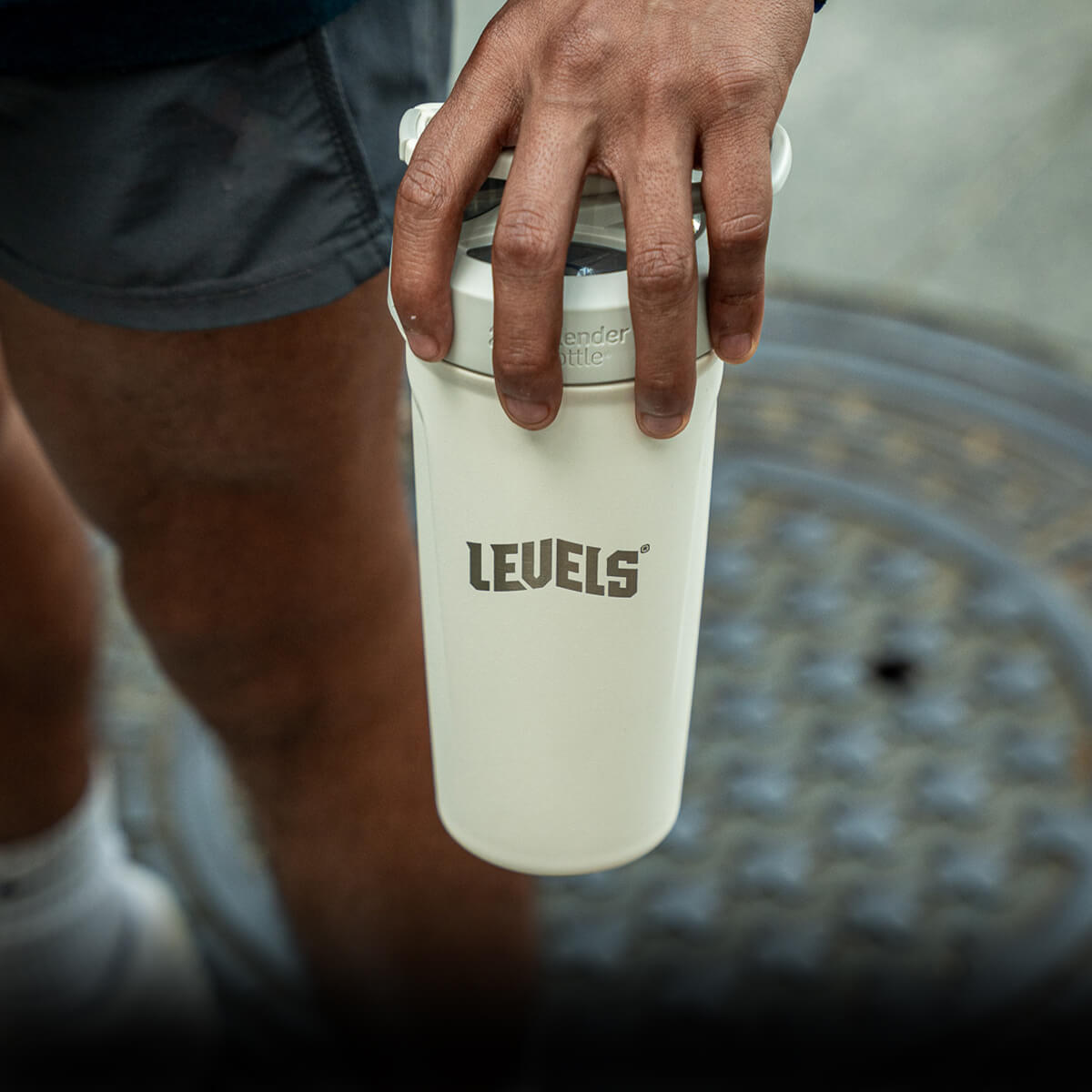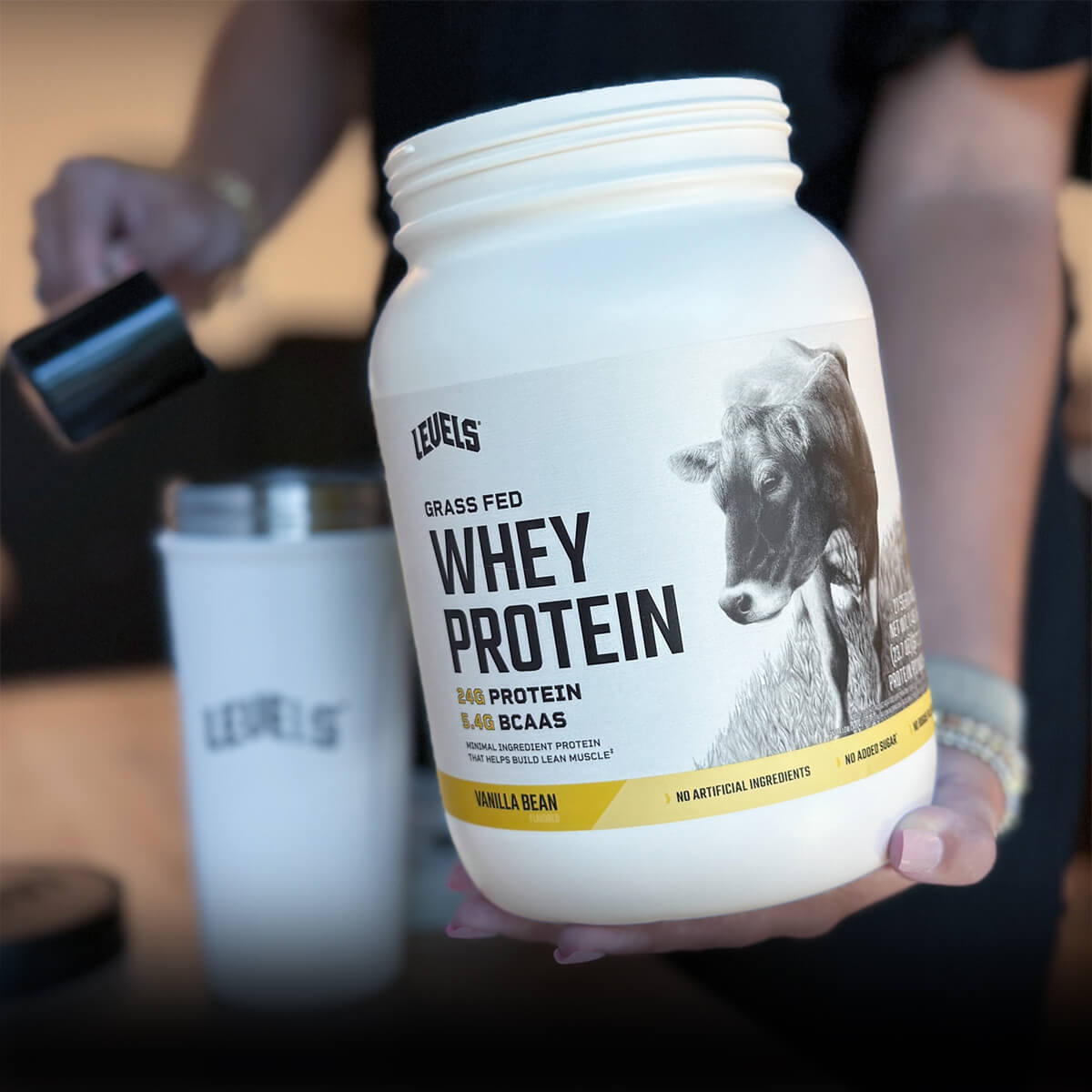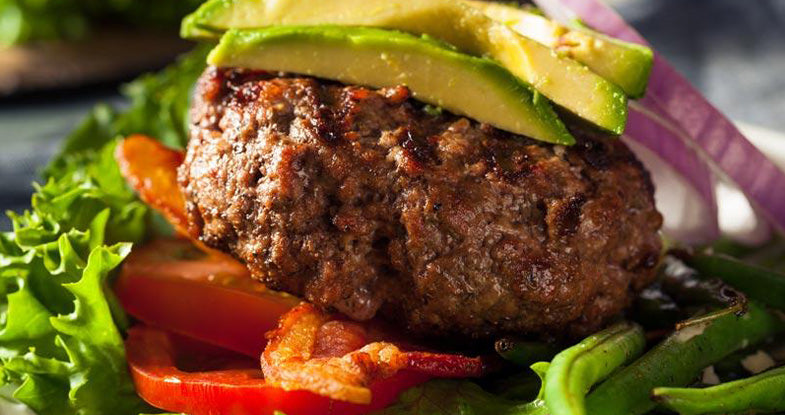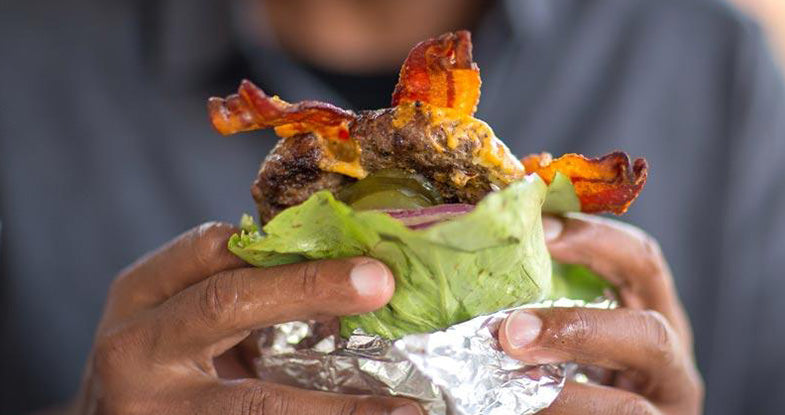Low-carb diets are becoming increasingly popular as a way to lose weight and feel better.
And among low-carb diets, two of the best-known approaches are the paleo diet and the ketogenic diet.
If you want to try eating low-carb, paleo and keto are great options. Both diets share a focus on food quality and long-term health, and either one is an excellent choice for sustainable weight loss.
But how do you know which diet is best for you?
While paleo and keto seem similar on the surface, they’re actually quite different. This article will look at each diet in-depth, then help you figure out which one will best help you reach your health goals.
What Is the Paleo Diet?
The paleo diet is built on a simple principle: for optimal health, you should eat food similar to what your caveman ancestors ate.
Origins of the Paleo Diet
The reasoning behind paleo is that humans didn’t evolve to eat the diet we eat today. Our ancestors didn’t farm grains or make refined sugar, and they definitely didn’t have access to fast food.
Instead, they ate what they could hunt, catch, or forage -- mostly meat, fish, greens, low-sugar fruit (modern fruit is much sweeter than it used to be), and nuts.
The paleo diet aims to mimic a hunter-gatherer diet, with the idea that you’ll be healthier if you trade processed modern food for the food that your body evolved to eat.
Paleo Diet Macronutrient Breakdown
Paleo doesn’t have a specific macronutrient ratio -- the ratio of fat, protein, and carbs that you should eat. It’s more about ideology: eat whole, nutrient-dense foods, regardless of their macronutrient content.

That said, eliminating processed food and grains tends to make paleo lower in carbs than your standard modern diet. It also tends to be very low in sugar.
In place of those carbs and sugar, paleo encourages you to eat lots of greens and meat. That means paleo is usually high-protein, moderate-fat (or high-fat), and fairly low-carb.
A sample macronutrient ratio on paleo might be:
- Fat: 50% (of total calories)
- Protein: 30%
- Carbs: 20%

Benefits of Paleo
Paleo has quite a few health benefits. It’s a balanced, fairly relaxed diet that allows you to enjoy a wide variety of foods. Here’s a look at what paleo can do for you.
Weight Loss
A lot of people lose weight on paleo, which makes sense. Cutting out junk food and replacing it with satiating, nutrient-dense whole foods is an excellent way to slim down.
In a 2014 study, overweight people who followed a paleo diet for two years saw significant fat loss[*].
Similarly, a broad review of paleo diet research found that people on paleo lost weight and had an overall decreased risk of chronic disease[*].
That said, there’s one thing to note when it comes to paleo and weight loss. Paleo allows sweet potatoes, pumpkin, squash, and other starchy vegetables, and technically you can eat as much of them as you want.
However, most people treat paleo as a low-carb diet, and if your goal is to lose weight on paleo, you may want to limit your carbs to around 20% of your daily calories.
Low-carb diets are especially good for weight loss, outperforming low-fat diets[*] and a variety of other popular weight-loss diets, like DASH and Zone diets[*].
So if you want to lose weight, paleo is a healthy choice overall, and low-carb paleo may work even better for you.
Heart Health
Paleo is also good for cardiovascular health.
People who follow a paleo diet long-term show a decrease in blood triglycerides, inflammation markers, blood pressure, and visceral fat -- several of the biggest risk factors for heart disease[*][*].
Energy Levels, Sugar Cravings, And Blood Sugar Control
Paleo helps stabilize blood sugar, too. A study of women with type 2 diabetes found that paleo, in particular, improves blood sugar control significantly[*].
The study’s results make sense. When you don’t eat sugar, refined carbs, or other high-glycemic foods, your blood sugar stays much more steady throughout the day[*].
Eating sugar and refined carbs cause a sudden spike in your blood sugar. In response to that increased blood sugar, your body releases insulin, a hormone that pulls the sugar out of your blood and returns your blood sugar levels to normal.
However, if you eat too many refined carbs, your insulin system may be shocked by the sudden blood sugar increase and release too much insulin in response. The insulin will pull too much sugar out of your blood, and you’ll end up with low blood sugar[*].
Basically, you’ll go from high blood sugar to low blood sugar in a short amount of time.
If you’ve ever had a sugar crash after a particularly carb-heavy meal, you know how this process feels. Your blood sugar goes on a rollercoaster ride: a quick spike in blood sugar, along with a quick jump in energy, followed by a blood sugar crash that comes with fatigue, sleepiness, trouble concentrating, and cravings for more sugar.
A low-carb diet like paleo smooths this whole process out. When you cut out refined carbs, your blood sugar stays stable and low throughout the day, and you end up with steady, even energy levels and decreased sugar cravings[*].
Paleo Food List
Here’s a sample list of foods you can eat on a paleo diet.
Protein
- Beef
- Lamb
- Pork
- Wild-caught fish
- Chicken
- Eggs
- Bone broth
- Natural, grass-fed whey protein
- Grass-fed collagen protein
Fat
- Grass-fed butter
- Lard
- Tallow
- Olive oil
- Coconut oil
- Avocado oil
- Almonds
- Walnuts
- Pecans
- Pistachios
- Cashews
- Pine nuts
Vegetables
- Avocado
- Broccoli
- Cauliflower
- Cabbage
- Brussels sprouts
- Fennel
- Green beans
- Bell pepper
- Hot pepper
- Tomato
- Onion
- Leek
- Scallion
- Spinach
- Kale
- Chard
- Zucchini
- Mushrooms
- Eggplant
- Carrot
Fruits
- Blackberry
- Strawberry
- Raspberry
- Blueberry
- Kiwi
- Lemon
- Lime
- Melon (sparingly; somewhat high in sugar)
- Apple (sparingly)
- Banana (sparingly)
Carbohydrates
- Sweet potato
- Squash
- Pumpkin
- Cassava
- Parsnip
- Plantain
- Peas
In short, the paleo diet is a fairly low-carb diet that focuses on eating whole foods like meat, eggs, high-quality fats, nuts, fresh greens, low-sugar fruits, and starchy vegetables.
What Is the Ketogenic Diet?
The ketogenic (keto) diet is a very low-carb, moderate-protein, high-fat diet.

Keto has become one of the most popular diets for people who want to lose weight. It’s more strict than other low-carb diets, like paleo, but keto also provides a lot of extra health benefits that you won’t find on other diets.
Origins of the Keto Diet
In the 1920s, researchers were trying to figure out how to treat patients with intractable epilepsy -- repeated, uncontrollable seizures that wouldn’t respond to medication.
They eventually discovered that a high-fat, very-low-carb diet functionally cured epilepsy in a lot of patients[*]. They called the diet a ketogenic diet because it put patients into ketosis, a state where they burn primarily fat for fuel instead of carbs.
When you eat carbs regularly, your body uses them as its primary fuel source -- it breaks them down into glucose and sends that glucose through your bloodstream to fuel your organs and brain.
But when you restrict your carb intake to very low levels, your body can’t use carbs for fuel anymore, and it switches over to burning fat as its primary energy source. This state is called ketosis, and it’s the goal of a ketogenic diet.
While the keto diet was originally used to control seizures, it’s become very popular in recent years for its other benefits: weight loss, mental clarity, increased energy levels, heart health, and more.
Keto Diet Macronutrient Breakdown
Where paleo is fairly relaxed on macronutrients, keto is quite specific. In order to get your body into ketosis, you have to limit your carbs to around 5% of your daily calories, or under about 50 grams of carbs a day.
In order to get enough calories, you have to replace those carbs with plenty of fat and protein.
A ketogenic macronutrient ratio is, therefore, pretty fixed:
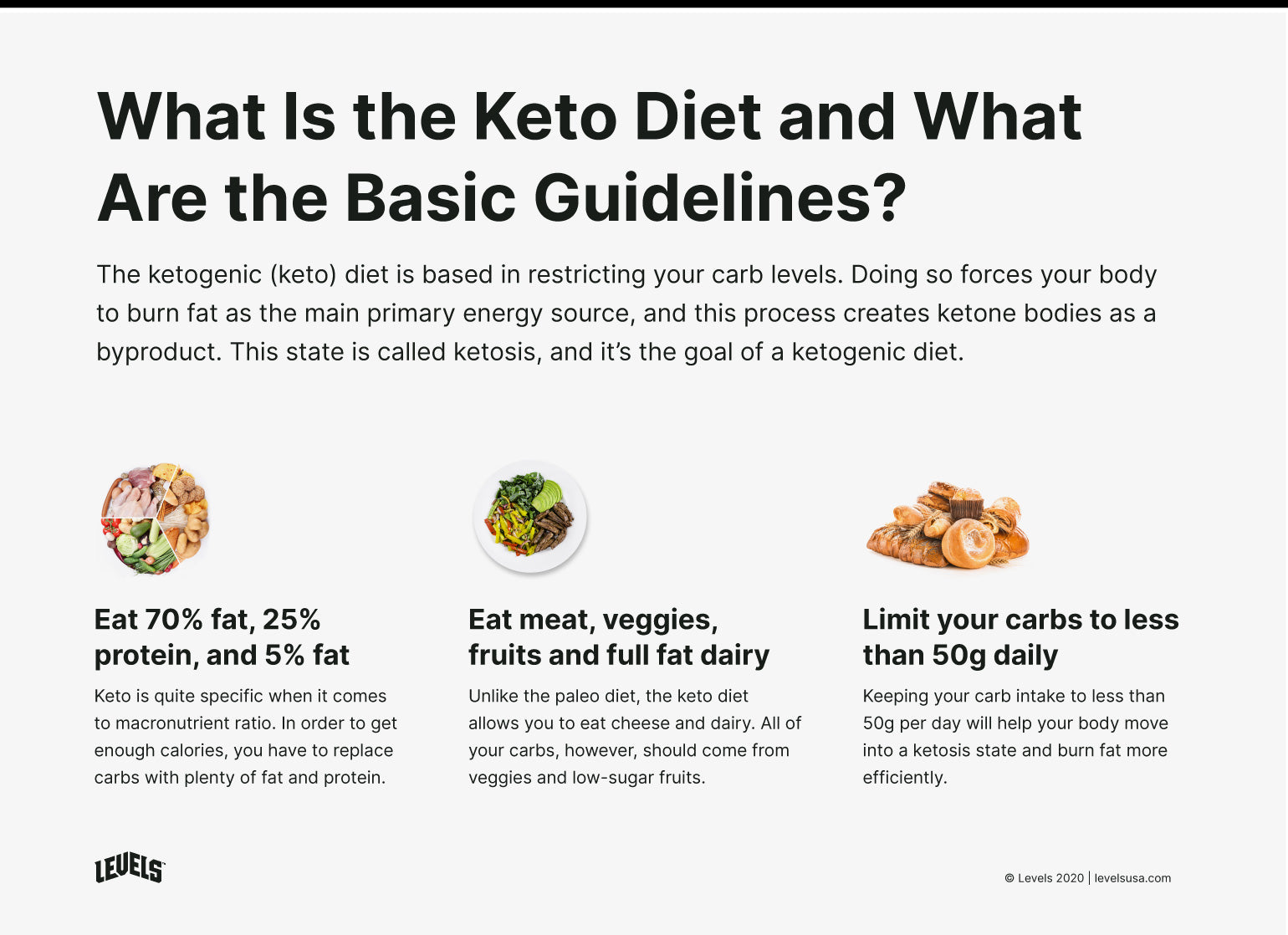
As long as you keep your carbs low, you have room to change your fat and protein intake. What’s important is keeping carbs at a maximum of 50 grams per day, and possibly even lower.
Keto Diet Benefits
It can be challenging to restrict your carbs on a keto diet, but the payoff is big. Being in ketosis comes with a wide variety of benefits that you won’t find with other diets.
Hunger Suppression
When you’re in ketosis, your body runs on ketones -- energy that you make when you break down fat.
Ketones suppress your appetite by reducing ghrelin, your body’s main hunger hormone[*]. On keto, you have lower ghrelin and you don’t get as hungry, even when you haven’t eaten much food[*].
Faster Metabolism
Keto also speeds up your metabolism. People who eat a keto diet see about a 15% increase in their daily calories burned -- about 300 extra calories a day, on average[*].
Weight Loss
The combination of more calories burned per day and decreased hunger makes keto a strong choice if you want to lose weight.
Sure enough, people have a lot of success losing weight sustainably on a keto diet. A large review of weight loss studies found that keto outperformed a low-fat diet when it came to long-term weight loss[*].
People also show unusually high adherence to keto; most diets have a high failure rate, but people are significantly more likely to stick to keto, instead of giving up on it and returning to their old diet[*]. That’s important for keeping weight off.
Mental Clarity and Long-Term Brain Health
Your brain cells are especially good at using ketones for energy, and an increase in mental clarity is one of the most common benefits people report after starting keto.

Research on keto and the brain is still fairly new, but it’s clear that keto changes your brain function significantly.
A large number of studies in animals have found that a keto diet improves cognition and gives the brain more available energy[*][*][*][*].
And while there aren’t studies in healthy humans yet, people with dementia and neurodegenerative diseases, like Parkinson’s and Alzheimer’s, see a significant benefit when they switch to a keto diet. Keto seems to protect the brain from further decline, and in some cases, can even reverse symptoms of dementia[*][*].
Early research also shows that keto may stabilize mood and help relieve depression and anxiety[*].
There isn’t enough research to make definitive claims about keto and brain function in healthy people. That said, there are enough early studies and anecdotal reports that if you want to think more clearly and have more mental energy, it’s worth trying keto to see how you feel.
Decreased Inflammation
Keto may also decrease inflammation. Quite a few studies have found that keto is anti-inflammatory in several parts of your body, including your brain:
- Two small studies in people with fatty livers found that keto significantly decreased liver inflammation[*][*].
- Beta-hydroxybutyrate (BHB), one of the main ketones you make when you’re burning fat for fuel, is a strong anti-inflammatory[*].
- Keto is neuroprotective, meaning it protects brain cells from inflammatory damage[*][*]
Keto Diet Food List
Here’s a sample list of foods you can eat on a ketogenic diet. Note that you can eat cheese, cream, and other full-fat dairy on keto, as long as it’s low in carbs. On paleo, dairy is a no-go.
On the other hand, you won’t be able to eat any carb sources on keto. All your carbs will come from vegetables and low-sugar fruits.
Protein
- Beef
- Lamb
- Pork
- Bacon
- Wild-caught fish
- Chicken
- Eggs
- Bone broth
- Natural, grass-fed whey protein
- Grass-fed collagen protein
Fat
- Grass-fed butter
- Lard
- Tallow
- Olive oil
- Coconut oil
- Avocado oil
- MCT oil
- Cheese
- Heavy cream
- Almonds
- Walnuts
- Pecans
- Pistachios
- Cashews
- Pine nuts
Vegetables
- Avocado
- Broccoli
- Cauliflower
- Cabbage
- Brussels sprouts
- Fennel
- Green beans
- Bell pepper
- Hot pepper
- Onion
- Leek
- Scallion
- Spinach
- Kale
- Chard
- Zucchini
- Mushrooms
- Eggplant
Fruits
- Strawberry
- Raspberry
- Blueberry
- Blackberry
- Lemon
- Lime
Refined Carbohydrates
- None. All your carbs will come from vegetables and fruits.
If you don’t mind cutting out carbs indefinitely, keto is a great diet for weight loss, and it comes with a lot of other benefits that support your overall health long-term.
Takeaway
Paleo and keto both have benefits and downsides, and one isn’t better than the other. A better question is: which diet works best for you?
Paleo and keto have a lot of the same benefits, although they tend to be more pronounced on a keto diet: faster weight loss, more energy, mental clarity, and so on.
However, some people find keto is more restrictive than paleo and feel keto is harder to stick to long-term. In that case, paleo would be a better option.
On the other hand, if you get intense carb and sugar cravings, you may find it’s easier for you to go keto and cut out carbs entirely, instead of moderating your carb intake as you do on paleo.
Therefore, both diets are excellent options for weight loss and overall health. Which one is best for you depends on your unique biology and nutritional needs.
The best way to figure out whether paleo or keto works better for you is to experiment with them. Give both diets a try and see which one helps you reach your health goals.







